Deploying a slide is a big deal.
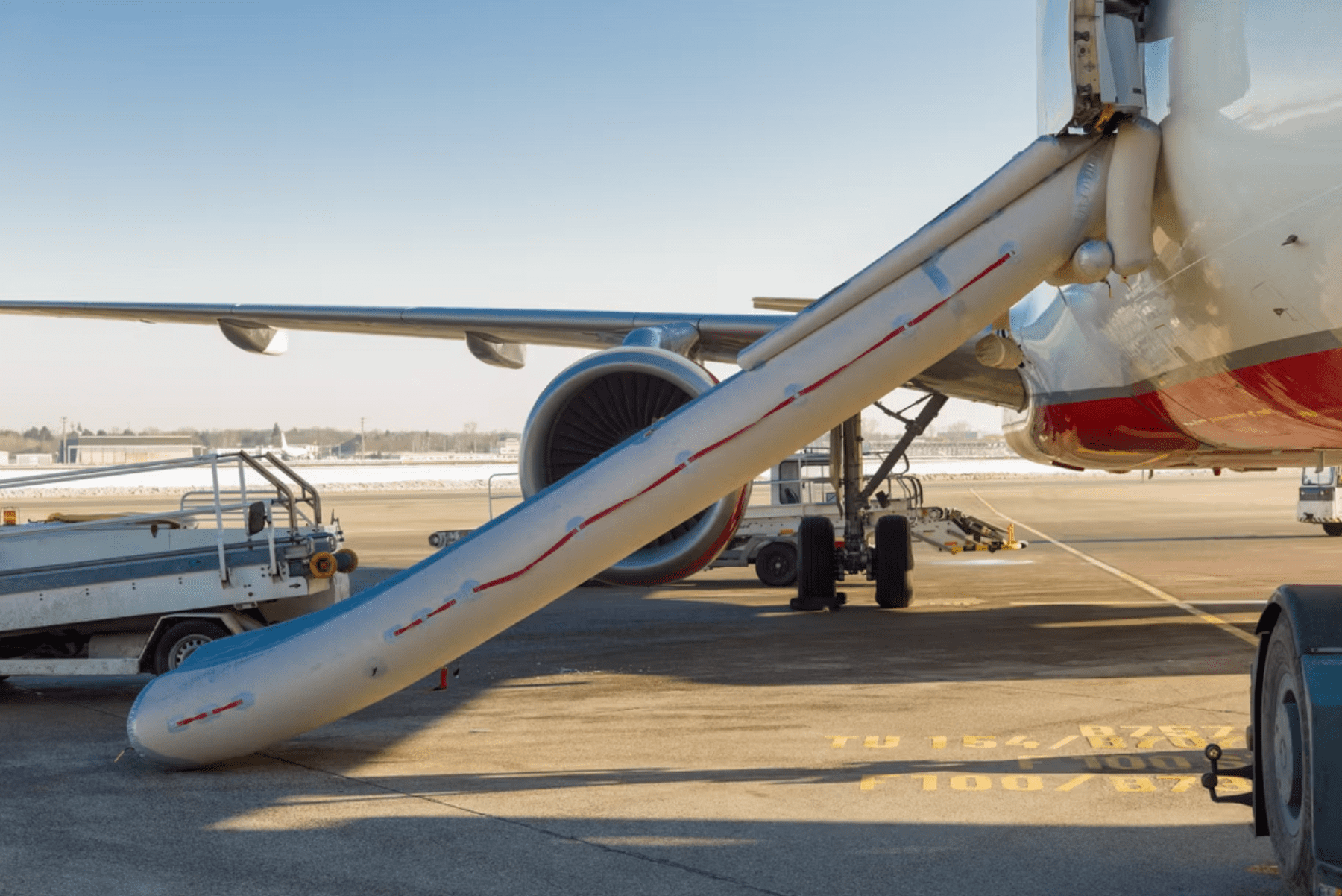
Photo: Mario Hagen | Shutterstock
There have been a number of inadvertent slide deployments in the last year, mostly by cabin crew. Let’s take a look at the reasons why they can happen and why the evacuation slide is deployed with no emergency situation.
The purpose
Evacuation slides are designed to be deployed and inflated in a maximum of 10 seconds. They allow for a safe and efficient exit from the aircraft in an emergency situation. They are extremely powerful and can cause serious injury if unintentionally opened in normal working conditions. Thankfully, the number of injuries on the ground has been low.
Recent events
British Airways have had two cases within the last six months. The most recent was on an Airbus A350, involving a cabin crew member who was new on the aircraft type, and as a result, the flight was delayed by 6 hours. The carrier had another such incident in December on a Boeing 777; the slide was deployed by accident by a new cabin crew member, delaying the flight by 4 hours. Both crew members returned to training. Wizz Air also had an inadvertent slide deployment in March on an A321 and Emirates on an A380 last year.
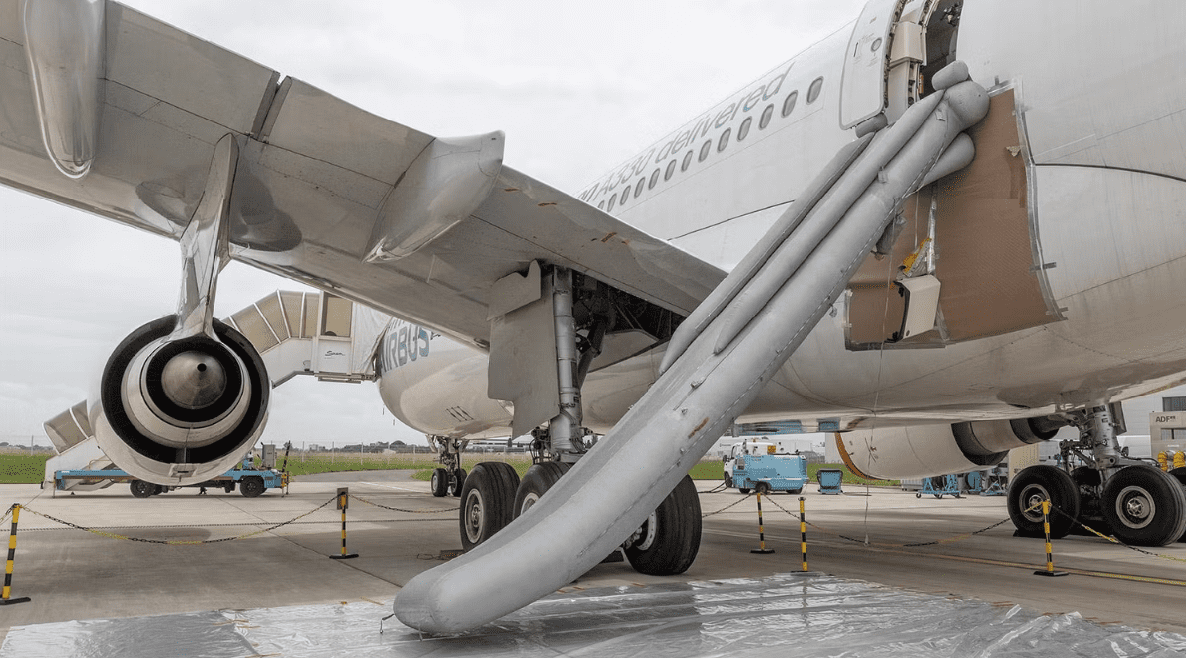
Photo: Airbus – Sylvain Ramadier
Intentional deployment
There have been 2 cases of intentional employment in normal working conditions by cabin crew. These were on a JetBlue and United Airlines aircraft, where disgruntled flight attendants exited the aircraft by slide as a statement to their airlines and frustrations with passengers.
Inadvertent deployment
This is when the person operating the door under normal conditions (non-emergency) and the door is still armed. The cabin crew are responsible for arming the doors on pushback and disarming the doors when arriving at the stand. Arming ensures that the slide will inflate as soon as the door is opened, assuming there is an emergency. However, once deployment starts, it cannot be stopped.
Examples
Airbus says that, on average, there are 30 – 40 inadvertent slide deployments every year. An example could be that the captain needs to look outside the aircraft and opens the door, not realizing that the cabin crew did not disarm it. Cabin crew might pull the door operating handle mistaking it for the door-disarming lever. Another example would be catering staff opening the door from the outside without realizing it was armed.
Problems
Inadvertent slide deployments, as well as potentially harming ground staff, cause operational disruption and can cost thousands of dollars. A 90-minute delay costs upwards of $11,000, and if the flight is canceled and passengers need hotels, it can cost as much as $200,000. The maintenance team has to repair the slide, if necessary, and repack it, though just the repacking alone costs $12,000.
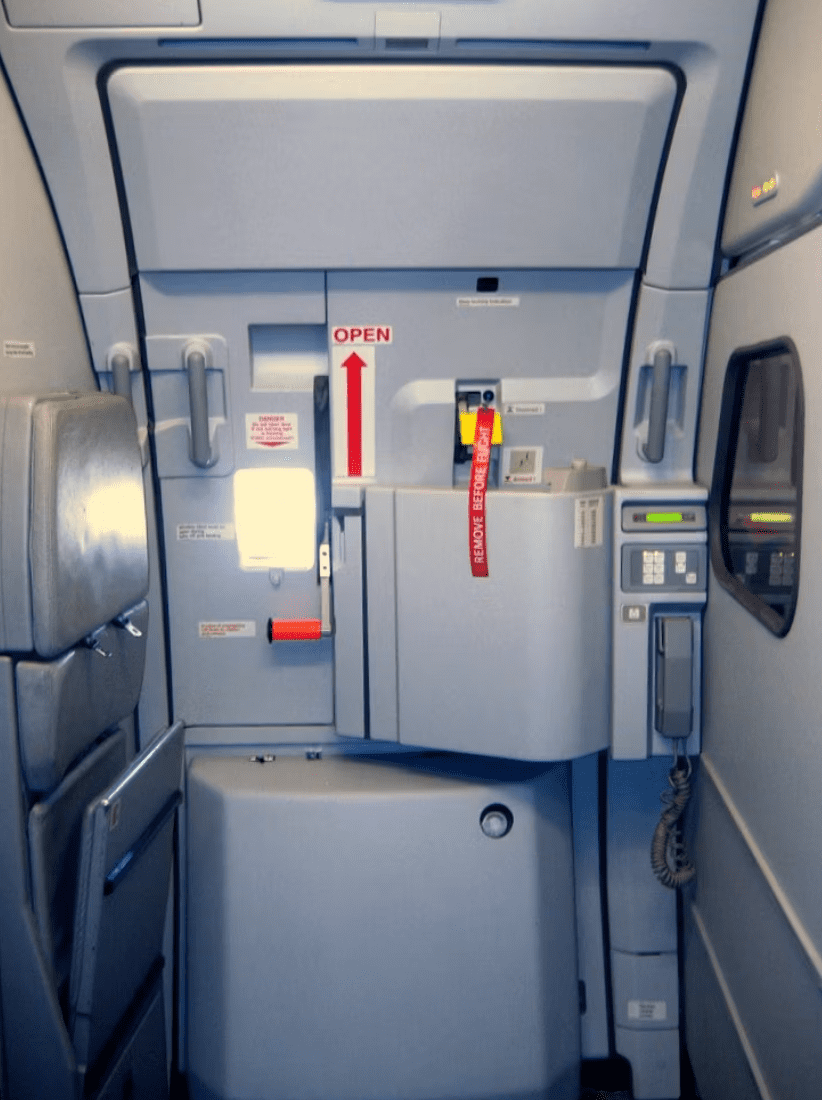
Photo: Christopher Doyle via Wikimedia Commons
The reasons why
Airbus studies found that the main reason for inadvertent deployment is the door operator being non-compliant with safety and operating procedures. The second reason was the distraction of the door operator. Then human factors come into play, with crew fatigue, passenger distraction, and time pressure being common. Sometimes, cabin crew work on 3 or 4 aircraft types, and all doors can look different, so confusion can happen. Poor communication between the crew can also be a factor.
Door operation
The arming and disarming of aircraft doors is a three-step process. There is first the command to arm or disarm (by the captain or senior cabin crew), arm/disarm the door, and crosscheck. The ‘crosscheck’ is where the crew member operating the opposite door checks the other crew member’s door to ensure it is armed/disarmed as commanded.
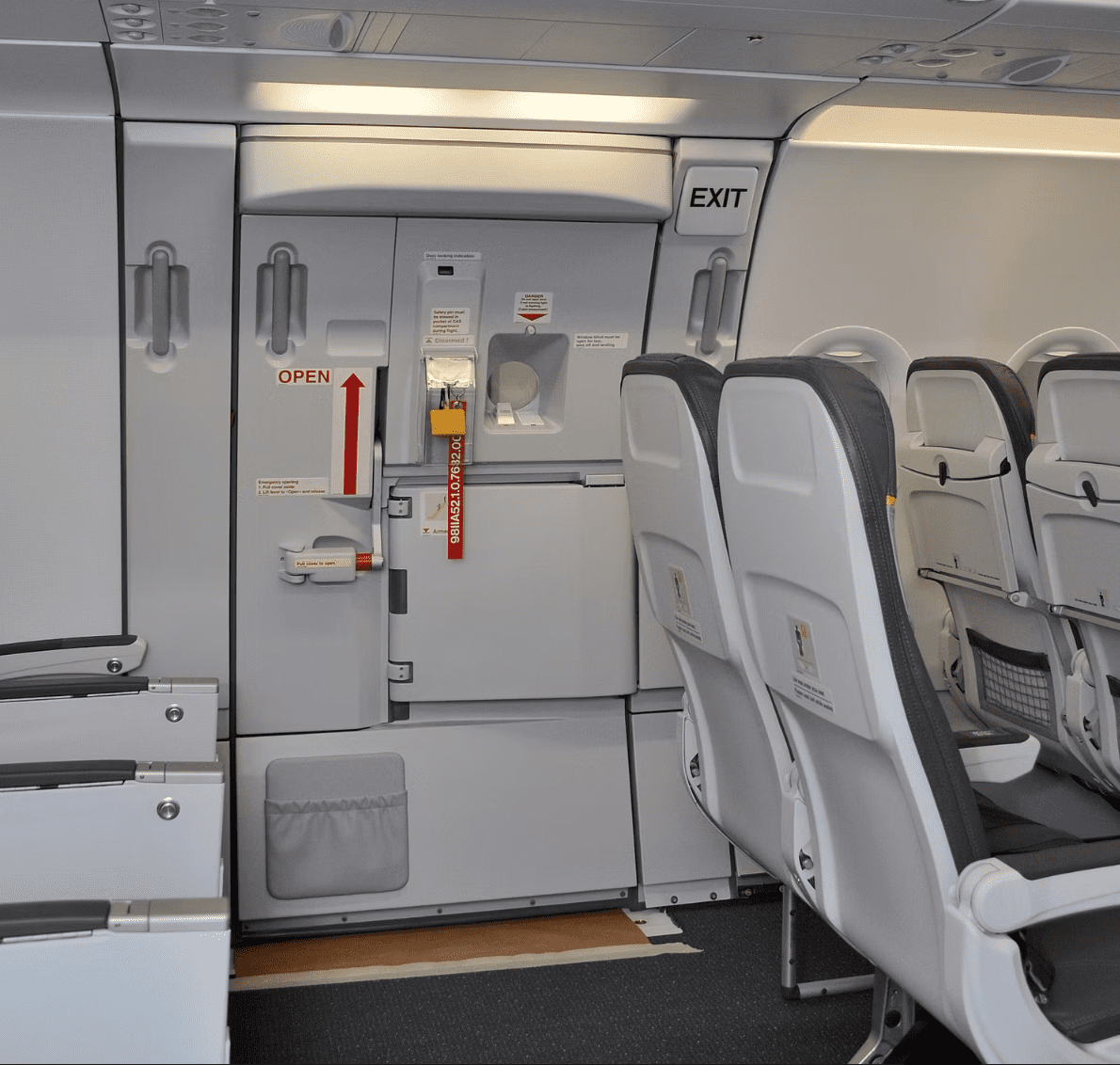
Photo: Airbus
Airbus door
On Airbus aircraft, there is also a safety pin that helps prevent the arming lever from being moved to the armed position. The process is known as pin-lever-pin. There is also a slide-armed light. Airbus aircraft can also be fitted with a buzzer that detects movement whilst the door is armed and someone lifts the door handle. Mistakes will still be made, and blowing a slide is a costly affair, so any technology that stops inadvertent slide deployment is worthwhile.
Source: Simple Flying
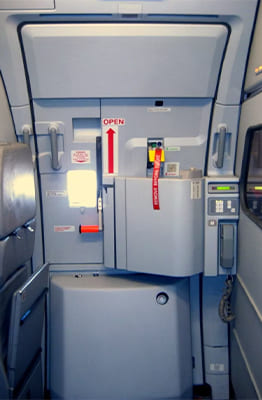
Warning: Illegal string offset 'cookies' in /home/u623323914/domains/eng.bayviet.com.vn/public_html/wp-includes/comment-template.php on line 2564